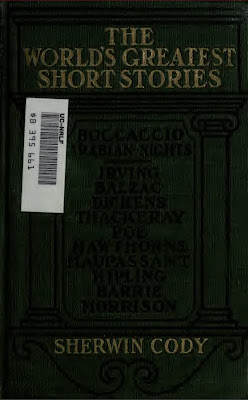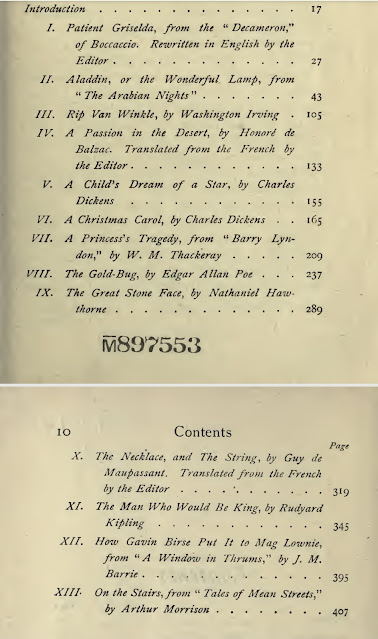A Selection from the World's Greatest Short Stories, Illustrative of the History of Short Story Writing
by Sherwin Cody
1868-1959
THE stories contained in this volume have been selected with the specific view of illustrating the history of the art of short story writing, and of affording suitable examples for the study of the constructive side of the art. No person can read any short story critically and intelligently without an elementary knowledge of both these subjects. It has been said that an appreciative reader recreates an artistic story or poem, following in the footsteps of the artist.
Obviously this cannot be done without an elementary knowledge of the art on its constructive side. Many schools and colleges, as well as numerous contributors to the magazines, now undertake to give some outline of this subject, and it is believed that a book like the present volume will prove useful alike to the student at home and the student in organized classes; and the editor trusts that the general reader will not find the volume wholly lacking in entertainment.
CONTENTS
About the Author
Alpheus Sherwin Cody (November 30, 1868 – April 4, 1959) was an American writer and entrepreneur who developed a long-running home-study course in speaking and writing and a signature series of advertisements asking “Do You Make These Mistakes in English?” A critic of traditional English education, Cody advocated colloquial style and grammar. His course, presented in a patented workbook format which he described as self-correcting, was purchased by over 150,000 students from its inception in 1918. He published essays, books and articles virtually nonstop from 1893 through 1950. In a book published in 1895, he gave the advice, "Write what you know—so go out and know something." Wikipedia
Buy Sherwin Cody Books at Amazon
The PDF might take a minute to load. Or, click to download PDF.
If your Web browser is not configured to display PDF files. No worries, just click here to download the PDF file.




.jpg)
No comments:
Post a Comment